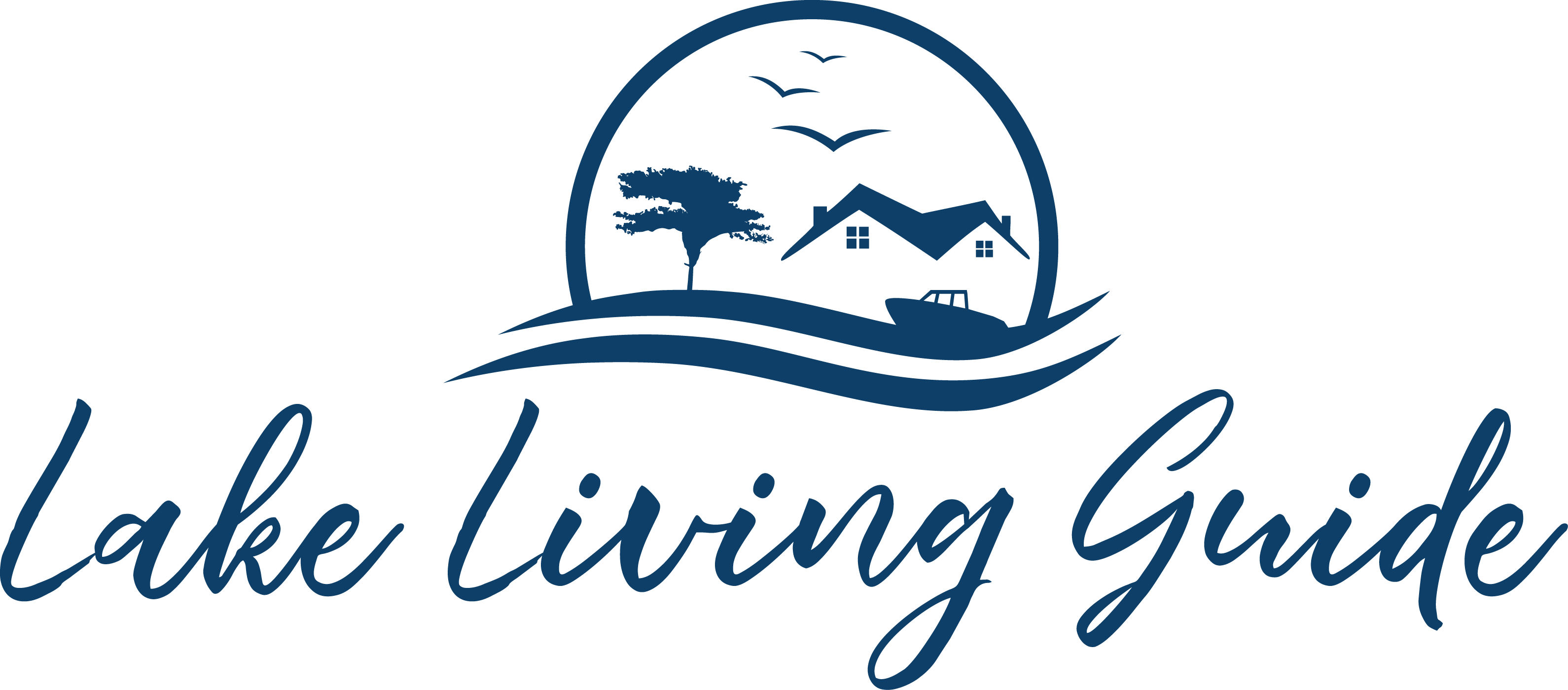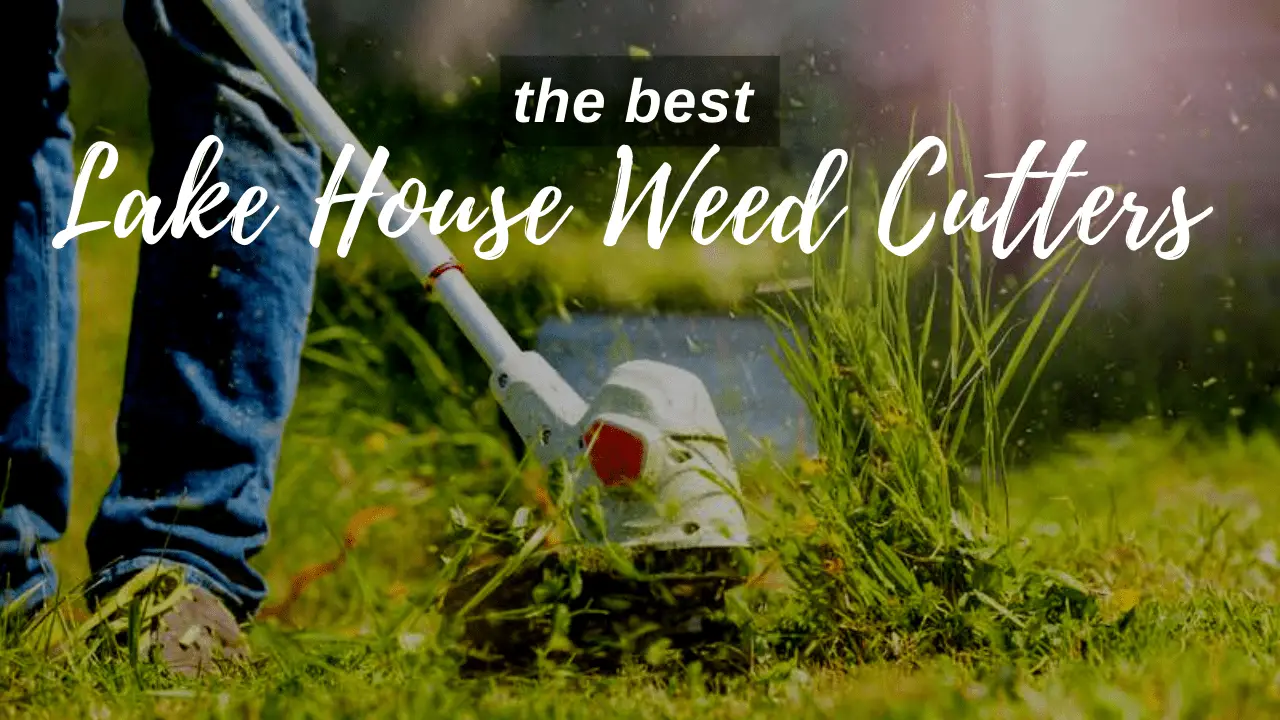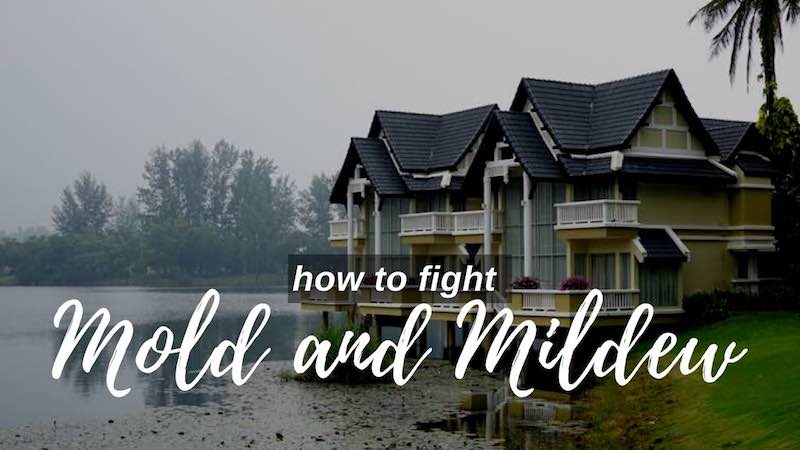
How To Fight Mold And Mildew in Your Lake House This Fall
Lake living is lovely and you would like to keep it that way. One way you can do so is to know how to fight mold and mildew that will want to take up residence in your lake house.
But everyone gets mold here or there, right? It is like dust on the furniture or streaks on the window glass, just part and parcel of everyday life.
And while that may be the case, it is imperative that mold not gain a hold in your lake house, or anywhere you reside for that matter.
Table of Contents
Mold And Mildew Can Cause Health Problems
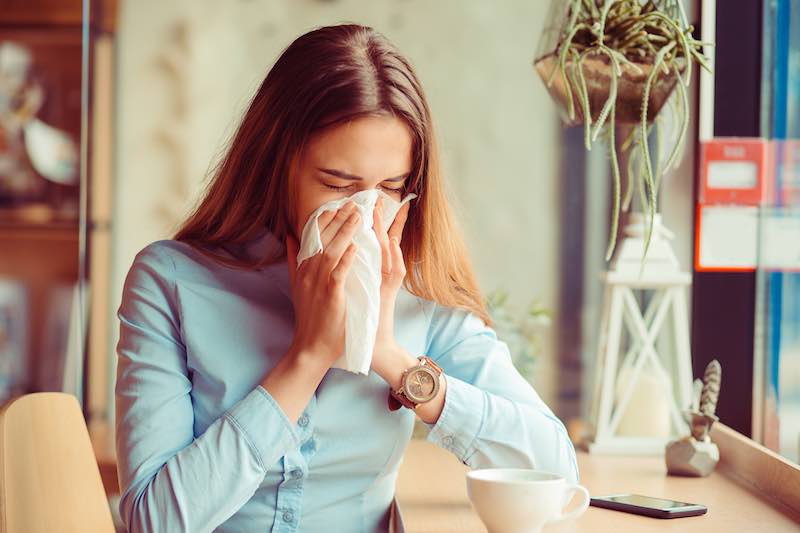
Besides damaging your lake house, mold can cause serious health problems. There are about 10% of the population that has severe allergic reactions to mold.
Mold and mildew are like evil twins. They are both types of fungi that thrive in moist environments.
They spread quickly and live on various surfaces, which can make them hard to get rid of.
If left unattended, these twins will wreak havoc and affect large areas of your lake house and your health.
The World Health Organization (WHO) has put out a brochure about DAMPNESS AND MOLD with guidelines for indoor air quality.
Microscopic Spores
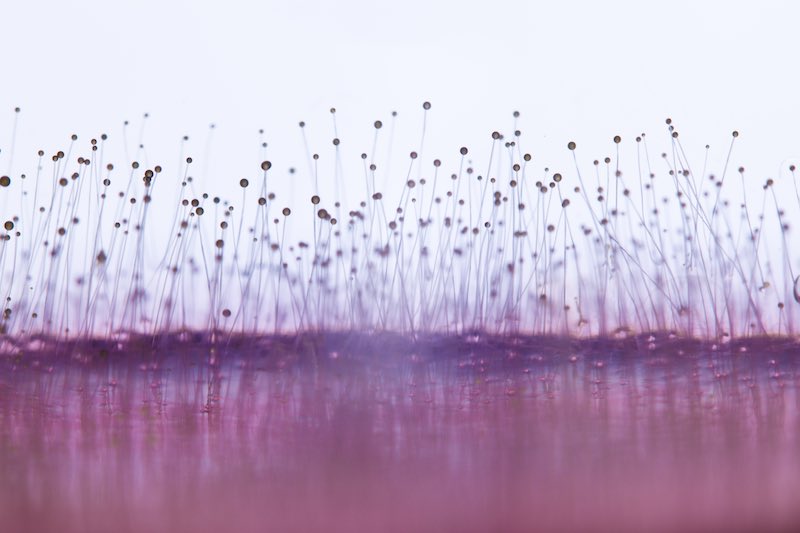
Primarily, it is the minute reproductive spores of mold and mildew that trigger allergic reactions.
The spores are incredibly small, which means that spores are hard to filter out.
On top of that, the spores can stay suspended in the air for hours, and that makes them easy to inhale.
Use Caution
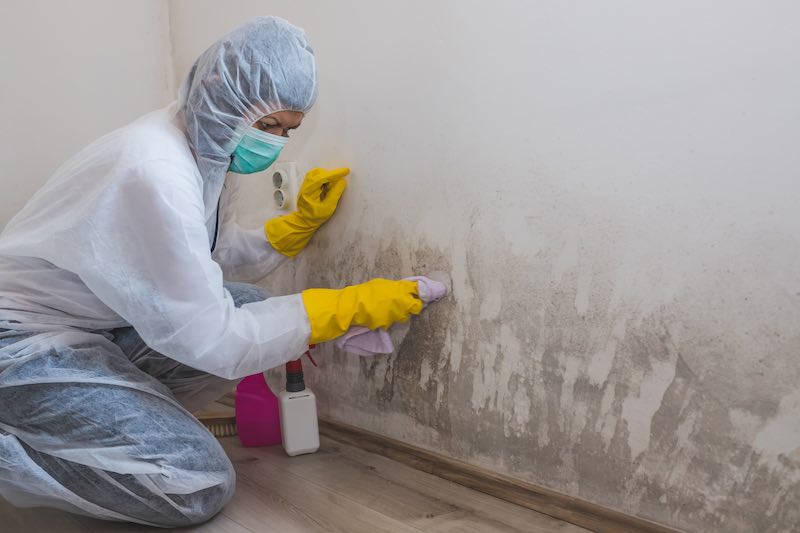
While there will be various information given in this article, if you feel that you have a mold problem or are experiencing mold and mildew related symptoms, consider calling in an expert to help you deal with the issue rather than attempting remediation yourself.
Vulnerable Individuals
Some of the symptoms of being exposed to mold and mildew spores include headaches, runny noses, nausea, sinus problems, skin rashes, and coughs.
The effects of exposure can leave you feeling listless. This isn’t very good anywhere you are, but especially at the lake when you want to enjoy yourself.
Some people feel like they have a case of the flu that just won’t go away.
As with many types of illnesses, mold can impact the elderly, newborns, and those with compromised immune systems the hardest.
Babies put everything in their mouths, and they crawl around on carpets that may harbor mold spores.
For most of us, mold and mildew reactions become alleviated after the removal of the source.
But for those who are vulnerable, it can trigger asthma attacks and render the individual extremely sick.
Not Fun Fungi

Mildew
While they are both fungi, mildew is a specific type of mold.
Mildew is primarily a plant disease. It can cause a lot of damage to crops and plants.
It can develop indoors and give you some of the same health issues that mold does with coughing, headaches, and respiratory problems.
Mildew will look grey or white. It will appear either powdery or fluffy. Mildew grows flat and remains on the surface.
Thankfully, it is much easier to remove than mold is. If you see a patch of flat “stuff” lying on the surface of a moist area, it is most likely mildew.
Mold
Mold is a fungus that grows in black or green patches. It will look fuzzy or slimy in appearance.
It will have irregularly shaped spots that can be different colors like blue, yellow, green. They can also be brown, grey, black, or white.
Mold will penetrate the surface of whatever surface it is growing on.
We are all familiar with mold growing on food. Mold will also grow on walls and in crawl spaces.
You will find mildew on damp surfaces, on paper, on fabrics, and organic material.
Whereas both mold and mildew are both problems to be solved, we will concentrate primarily on mold for this article. That is because mold can cause structural damage to your lake house.
How Long Does It Take For Mold To Grow

According to the Federal Emergency Management Agency (FEMA), MOLD & MILDEW can start to grow on a damp surface within 24 to 48 hours.
FEMA says that molds digest organic material and, in the process, destroy the material that they grow on, spreading to other areas as they go.
Homes or items damaged by floods are especially vulnerable to being destroyed by mold.
Main Types Of Mold
Like mildew, mold can also make you sick. According to the Centers for Disease Control and Prevention (CDC), the number of mold species that can live indoors is enormous.
There are five main types that most of those molds fall into. They are:
Alternaria
It grows on walls and in showers. You will also find it around windows where condensation collects and under sinks or other damp places. It can be black, grey, or dark brown. Alternaria will look wooly.
Aspergillus
Out of the 10,000 types of molds that can live indoors, aspsergillus is the most common type. You will see it growing on walls, on insulation, paper products, and clothing. It will be grey, brown, yellow, green, along with black or white.
Cladosporium
Most molds like warmth, but caldosporium will happily grow in cool areas.
You will see the black or olive-green color mold on fabrics, carpets, and curtains. It will also grow on wood surfaces, like floorboards and cabinets.
Penicillium
This blue-green mold has a strong, musty odor. Often found on materials that have been in contact with water.
Carpet, insulation, mattresses, and any areas where there might have been a leak. These spores spread easily.
Stachybotrys Chartarum
The infamous “black mold” is the most dangerous of all household molds. The mold is black and has a characteristic musty odor.
You will find black mold in areas that are always damp. Leaky pipes, a ceiling or attic leak, inside ducts for air conditioning, and other places where there is a lot of condensation.
Test For Mold
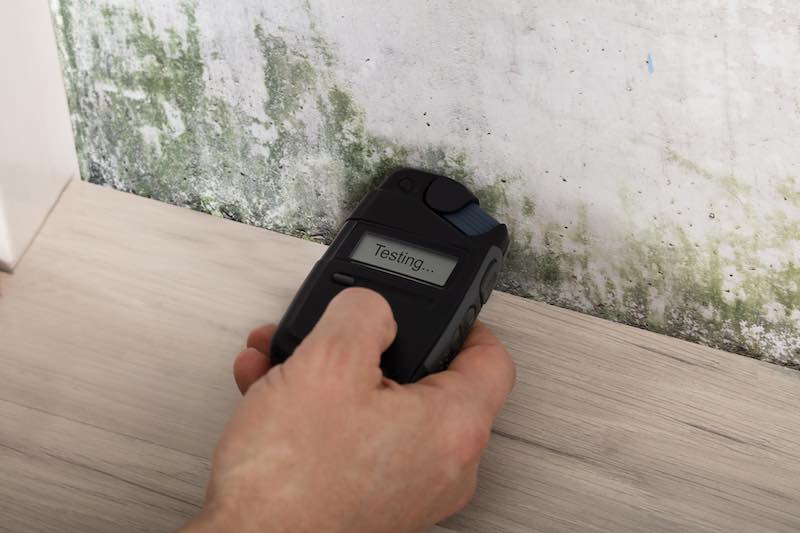
If you suspect that you have a mold problem, you can do some testing yourself to see what you are dealing with.
Put a few drops of bleach on an affected area. Wait about five minutes or so, and recheck the spot. If the area is lighter in color than it was before, you have mildew.
If the area remains dark, then you have mold.
There are also testing kits available at some of the home improvement stores like Home Depot and Lowe’s.
An Ounce Of Prevention Is Worth A Pound Of Cure
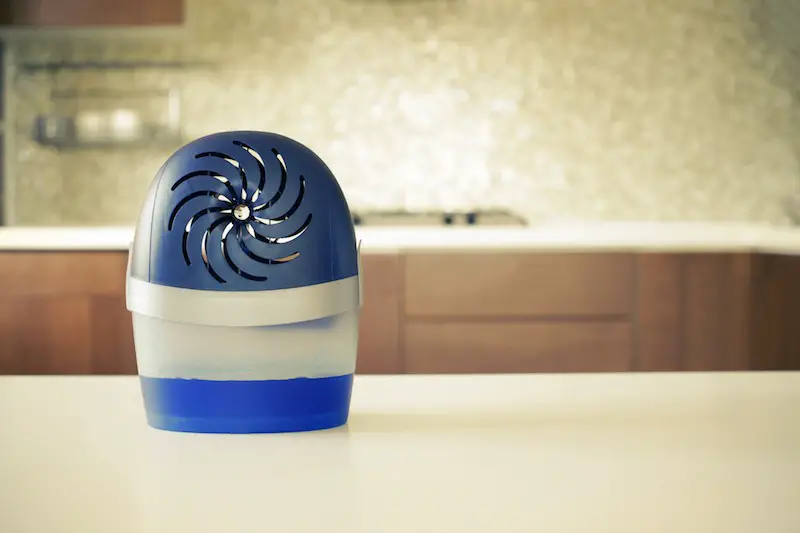
The best way to control mold or mildew in your lake house is to prevent it from developing as much as you possibly can.
That means that you need to keep the areas of your home dry and moisture-free. This will be a tall order being on the lake, but it will pay dividends not to repair mold damage.
A dehumidifier can help maintain a humidity level inside your house. You want to aim for a 40% to 50% level.
A regular inspection of your heating and cooling systems to make sure you catch any leaks that might develop.
Check under kitchen and bathroom sinks periodically.
Use fans to ensure good air circulation through your lake house.
And check outside your home, too, for mildew-affected plants and weeds. Remove them as soon as you see any.
How To Clean Mildew in Your Lake House
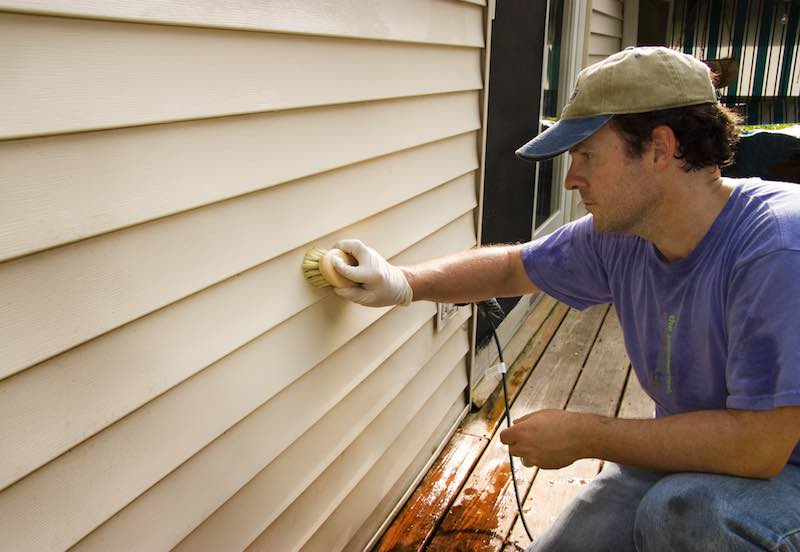
Because mildew is a surface fungus, treatment with a chemical cleaner is effective.
If you decide to clean it yourself, make sure the area has lots of ventilation and wear a mask and protective gloves.
You don’t want to be breathing in spores or to breathe fumes from the cleaner.
Use the cleaner per the manufacturer’s directions.
Clean the surrounding area and get any other mildew that might be thinking of growing in the area.
How To Clean Mold in Your Lake House
Cleaning mold is a different story. Where mildew sits on the surface, mold attaches to the material with microscopic filaments.
These filaments go beneath the surface, which is why mold can cause such significant damage to floors and walls.
Mold spores spread easily. They can thrive in extreme conditions and affect large areas.
Unfortunately, mold is only visible when the colonies of fungi start growing. This means that mold already has a hold by the time you see it.
It can be in areas that are hard to access and areas that you can’t see.
If there is a large amount of mold to be removed, the safest way to conquer it is to call in a mold remediation company.
Professionals can determine how to address the issue and can also determine the extent of the problem.
Take this into consideration if you suspect your lake house has a mold issue.
Borax Can Help You Fight the Mold and Mildew
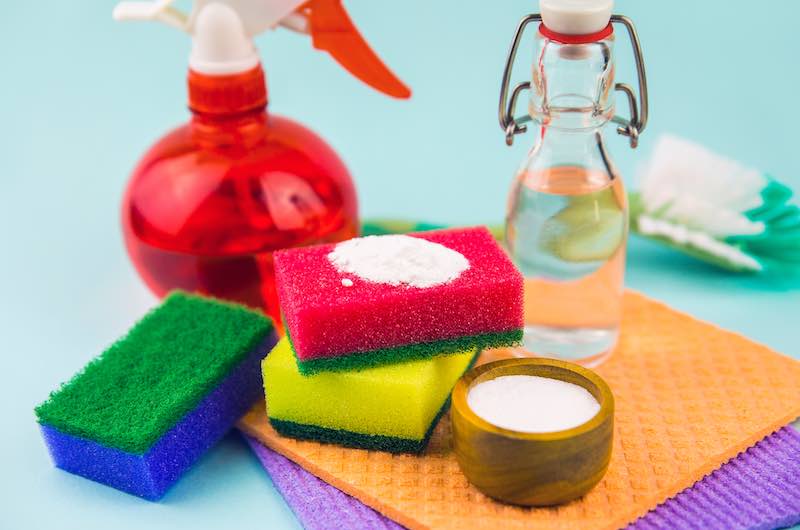
Maybe your mold issue has just begun, it is a small area, you have stopped the moisture problem and now want to clean the area.
Angie’s List suggests How to Clean Mold: Mistakes to Avoid. Don’t use bleach! It is a logical thought, but it is also one that will not kill the mold; it will only lighten the color.
You’ll find Borax at most stores in the laundry detergent section. Use one cup of powdered Borax in one gallon of hot water.
You will not be able to use this on drywall, as that will only add to the moisture problem. Borax will keep new mold from growing too.
Essential Oils
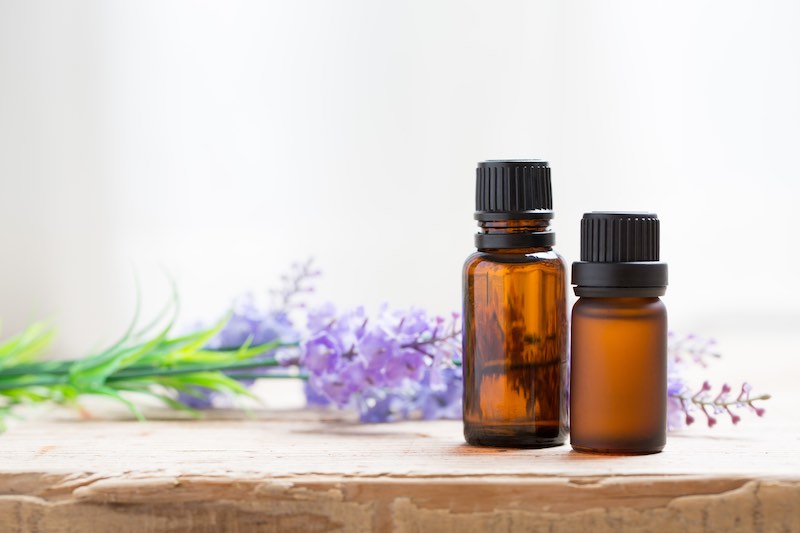
While some would say that essential oils are of no use in preventing or protecting against mold, it does not hurt to try what others have found helpful.
Enthusiasts suggest that diffusing one of these oils in your home will help ward off mold.
If nothing else, your lake house will smell amazing!
- Cinnamon Oil: Touted as being effective at protecting agonist mold growth
- Thyme Oil: Good for fighting off mold-related bacteria
- Clove Oil: For protecting against mold growth
- Tea Tree Oil: This oil is also antimicrobial and antifungal
These oils are not to be used to try and clean off the existing mold.
Do You Need To Detox After Mold Exposure?
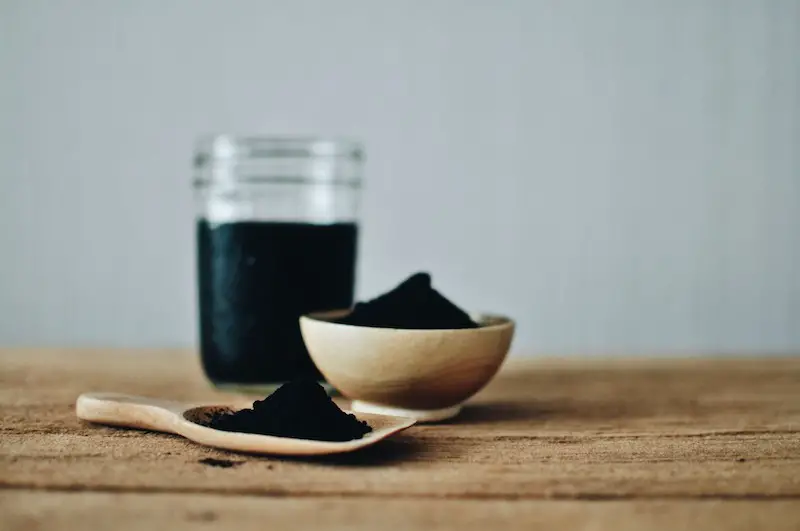
Mold can be a health hazard and can cause a variety of unpleasant symptoms.
There can sometimes be mold in your lake house or even your workplace, and you might not know it right away.
Does exposure to mold mean you will need to detox from it? Some feel you would need to undergo a detoxing using activated charcoal supplements or other dietary cleansers.
Certainly, those who have mold allergies, asthma, or a compromised immune system will need to take precautions against mold. But what about mold toxicity?
What Is Mold Toxicity?
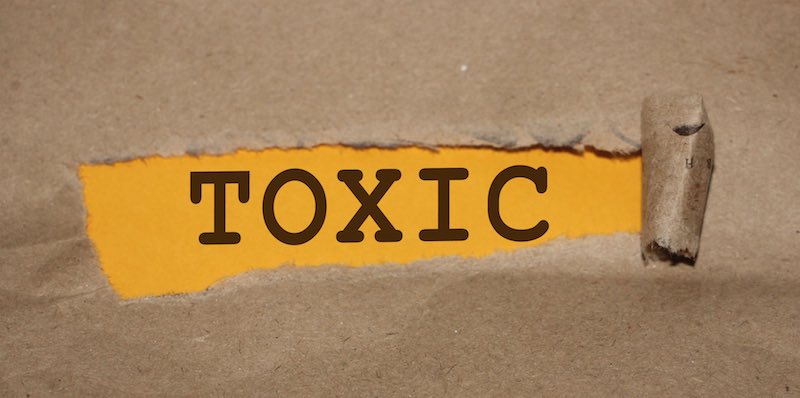
Women’s’ Health Magazine explains mold toxicity in the article Do You Need To Detox Mold From Your Body?
Mold toxicity would mean that mold had produced substances called mycotoxins in your body.
Those mycotoxins could contribute to autoimmune conditions and chronic disease. There is some doubt about the ability of exposure to mold to contribute to toxicity.
There is no test to determine if that is the case.
However, there is no doubt that exposure to mold over a period of time and breathing the spores can exacerbate both allergies and asthma.
A respiratory infection could also occur, but a chronic condition linked to mold exposure has not been proven.
Asthma and Allergy Foundation of America has suggestions and guidelines if you feel you might have a mold allergy.
Know Thyself

Above anyone else, you know yourself and your body. If you feel that you are sensitive to mold and mildew, then you probably are.
While studies may not have proven certain products like activated charcoal supplements or probiotics would help relieve your system of mold spore effects, they also don’t show that they hurt you.
If you decide to try something along those lines, you will be the best judge of if they work for you or not.
Some go overboard with dire warnings and others will say that the fears are unjustified.
Find your truth somewhere in-between. If a product works for you, it is all the proof that you need.
In Conclusion
As with most maintenance issues, it is better to use prevention as the best method to conquer mold.
If you don’t have that luxury; maybe you only realized you had a problem when it presented itself, then do all that you can to remediate the issue.
Then start again by using the proven methods of controlling humidity, airflow, and checking for leaks as the best way to eliminate mold from your lake house.
FAQ
Will a vacuum cleaner with a HEPA filter reduce mold?
Yes, they can. Mold spores are microscopic. They range from four to twenty microns in size. Hepa filters can trap particles down to 3 microns.
What is the single most effective strategy in controlling mold?
Moisture control is a crucial factor in controlling mold. For any water-damaged areas, they must be dried out within 24 – 48 hours to prevent mold.
Is black mold the most dangerous?
According to the CDC, the mold color is not an indication of how dangerous a mold may be. All mold needs removing.
